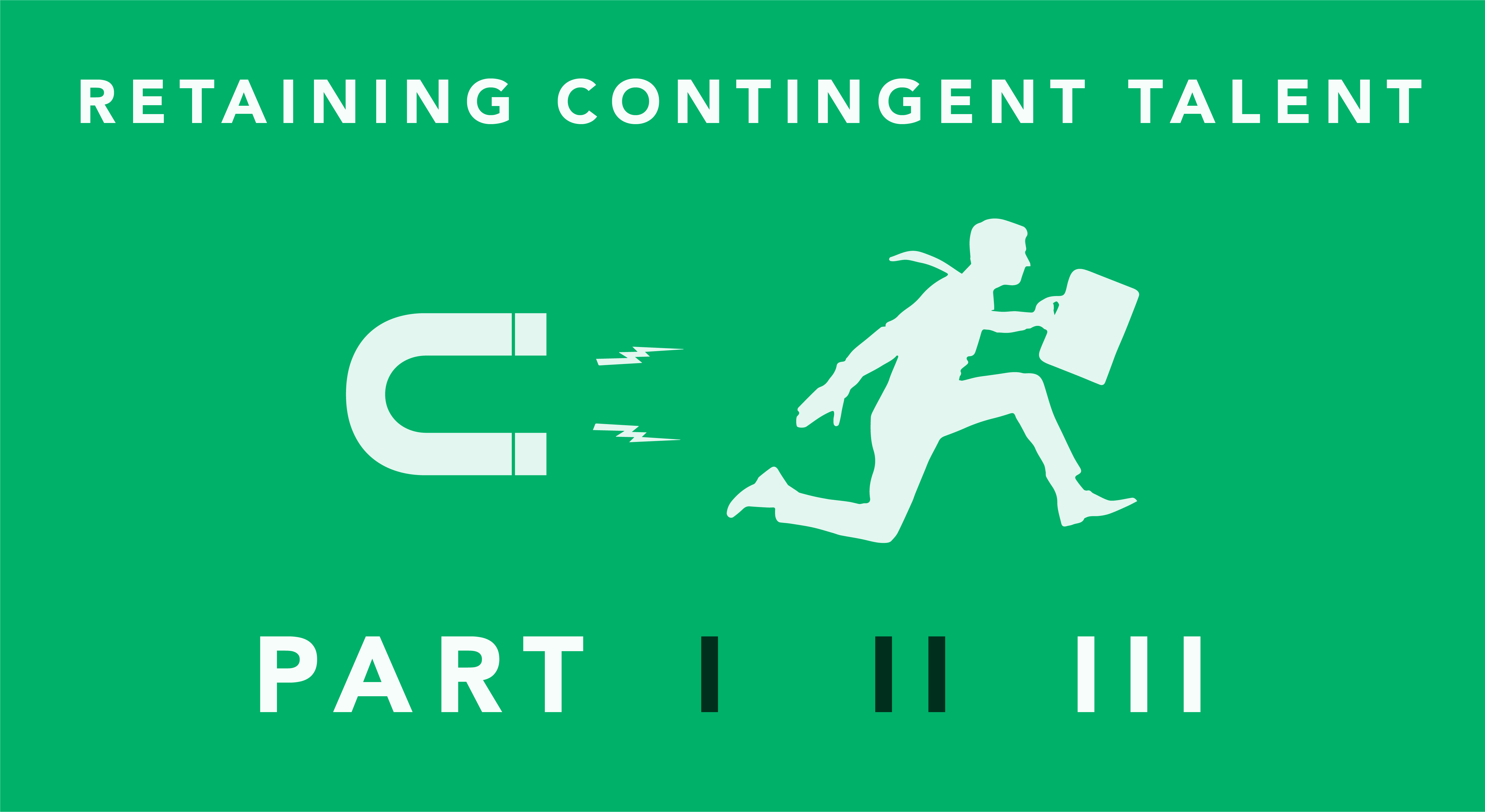Retaining Contingent Talent in an Employee’s Market: Part III

In Parts 1 and 2 of this series, we examined the Work Institute’s annual report on workforce retention was compiled from more than 234,000 exit interviews. Having uncovered the main reasons why employees decide to leave a job, this third and final installment looks at the financial impact of high employee turnover in the contingent arena and ways workforce management strategies can be leveraged to mitigate turnover.
The financial impact of employee turnover cannot be overstated. Between job advertising costs, interview expenses and other costs associated with sourcing new contractors, failing to focus on the drivers of worker satisfaction leads to lower engagement, poor productivity and weakened morale. All of which leads a resource to seek happier accommodations elsewhere. According to a study by SHRM, it can cost an employer the equivalent of between six and nine months of an employee’s salary to source and train his/her replacement. Separate research conducted by the Center for America Progress reveals the cost of losing an employee to be anywhere from 16% of their salary for hourly, unsalaried employees, to 213% of the salary for a highly trained position! Think of it.
In today’s low unemployment environment, the cost of churn in the contingent workforce can quickly grow to levels unsustainable for profitability. Organizations must have some strategies in place to make themselves attractive to contract workers and rewarding enough to retain them once they’ve been hired. Here are some ideas to get your thought process fired.
The cost of training and onboarding is one of the most significant factors involved. Focusing attention on your onboarding and training processes can help ensure your new hires begin their experience with your organization on a positive and motivated footing. Many organizations report better retention when they actively provide a rigorous onboarding process focused on delivering relevant on the job training, detailed guidelines and job requirements and even mentoring programs pairing existing workers with new hires. When an employee is engaged in the workplace and provided a clear objective and sense of purpose, they are more likely to be more productive and content in their role.
Formal programs for advancement. Whether you can offer a pathway from temp to permanent hire or not, a best practice for retention involves drawing a clear line between the position and future advancement. This can be achieved by advertising the job skills, experiences and technologies a candidate can and will gain through their engagement with your organization. Illustrating the career-boosting value and professional development contractors earn working with your organization provides candidates with a tangible reason to apply and stay for as long as the engagement lasts.
When workers are free to speak their minds, report conflicts, speak their minds, etc., organizations report improved workforce morale. Open dialogue between the workforce and management enables workers to feel more connected to the company’s evolution. As such, make sure management resources are directed to foster open, transparent, and respectful communication. Encourage this behavior in across all departments and workforce management teams and you’ll also reinforce trust in your senior management which is another factor in maintaining employee satisfaction.
There are many different policies, practices and means for driving greater retention among the contingent workforce. Not all strategies are right for all organizations. The key is to find the ones that are best aligned with your operations. Luckily, nextSource has tons of experience developing retention strategies for all manner of organizations, and we can help you too.


